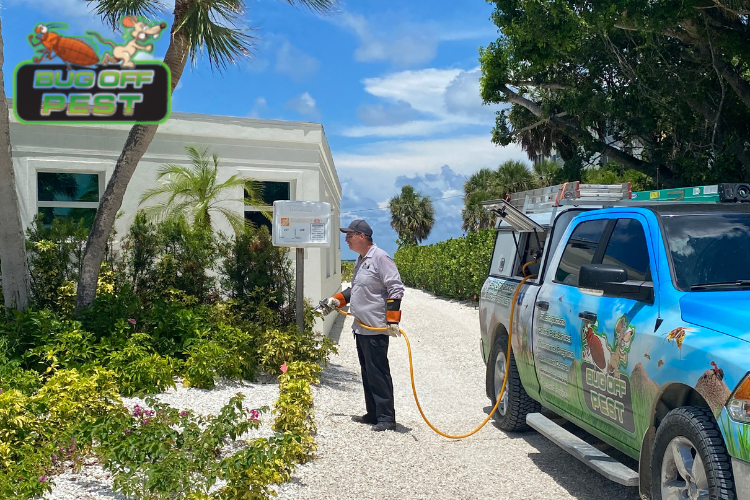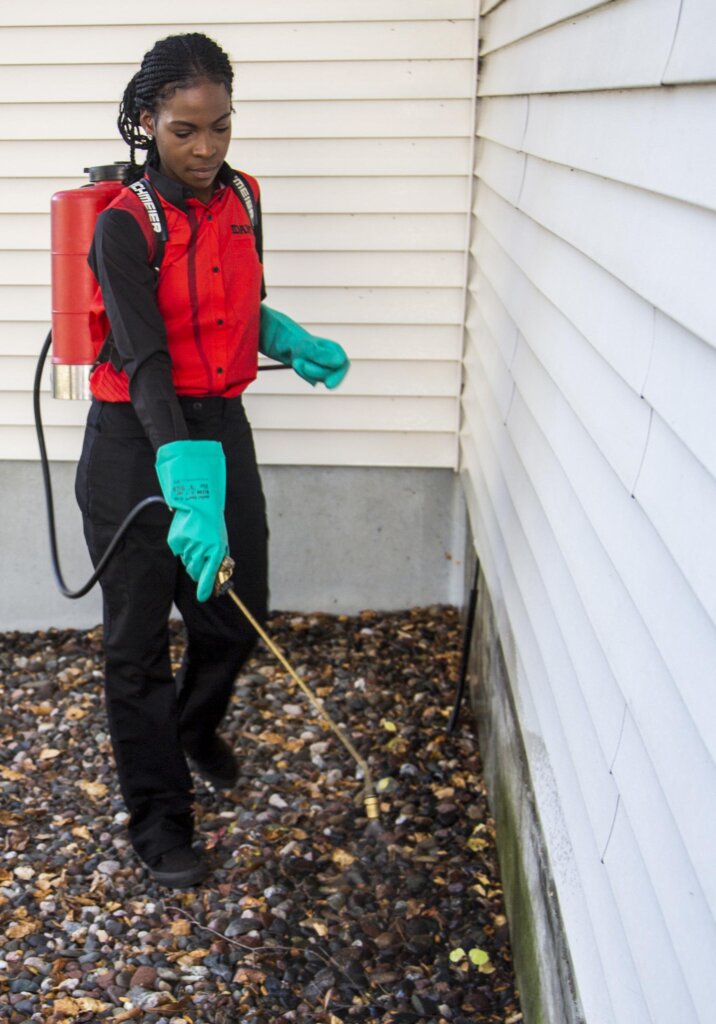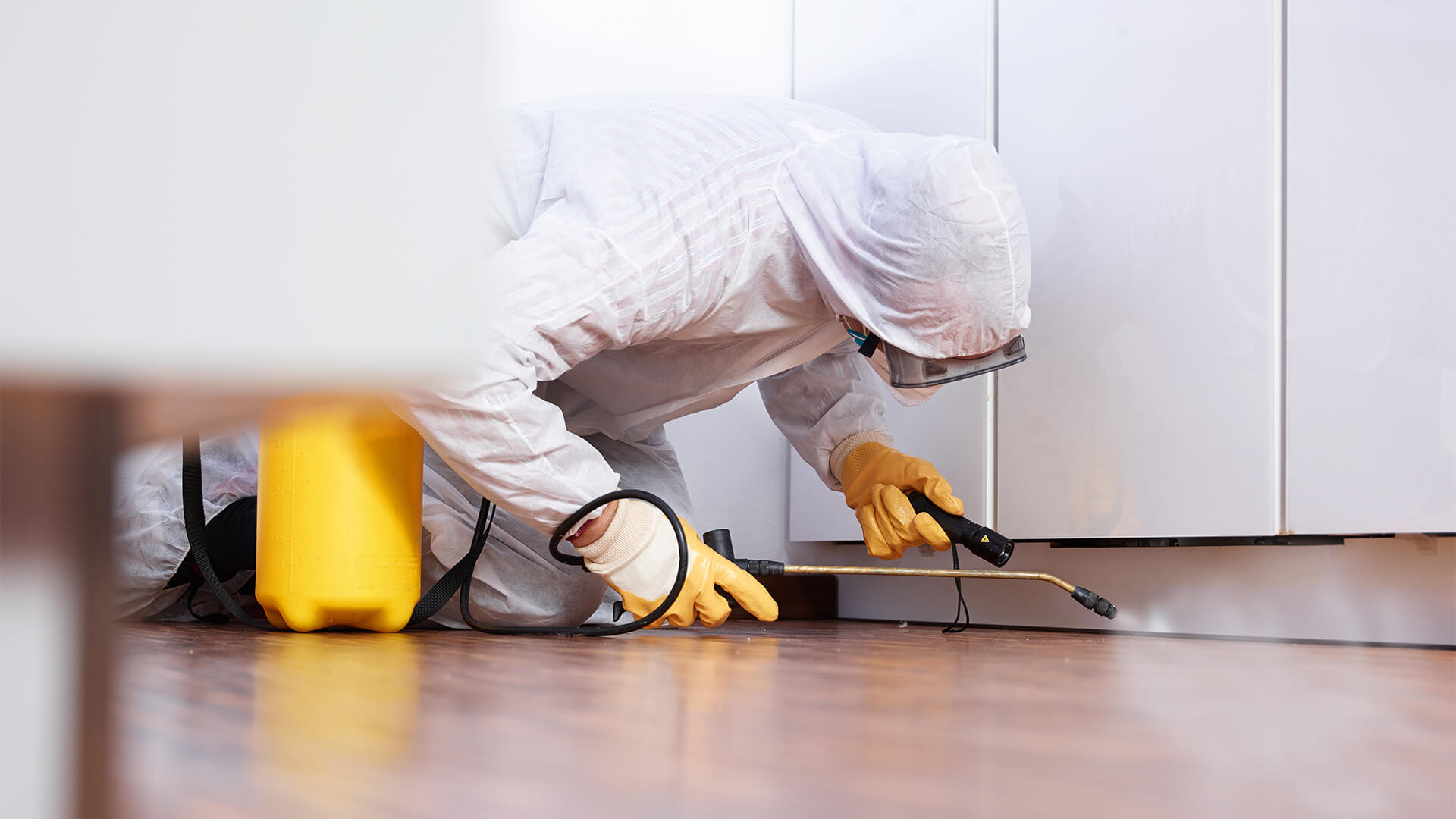Powerful Termite Treatment Port Charlotte to Safeguard Your Home
Learn More About the Latest Advances in Insect Control and Exactly How to Carry Out Effective Treatment Solutions
Recently, the area of pest control has actually witnessed substantial improvements, driven by the demand for sustainable and effective treatment remedies. Innovative approaches such as Integrated Pest Monitoring (IPM) integrate environmentally friendly practices with advanced modern technology, enhancing both effectiveness and ecological responsibility. Additionally, the assimilation of smart technologies and do it yourself techniques has empowered individuals to take on bug problems better. As we explore these developments, it comes to be necessary to comprehend just how finest to carry out these approaches in various settings to attain optimal results. The ramifications for parasite monitoring methods can be transformative.
Eco-Friendly Insect Control Options
In the last few years, the demand for eco-friendly parasite control alternatives has risen as property owners and services alike look for lasting options to typical chemical treatments. This shift is driven by growing ecological understanding and a desire to decrease the health and wellness risks associated with artificial pesticides.

Eco-friendly insect control approaches incorporate a variety of techniques that prioritize making use of all-natural compounds and methods. Integrated Bug Administration (IPM) is one such strategy, integrating organic, social, and mechanical techniques to take care of pest populations while decreasing reliance on chemicals (Wildlife removal services). This all natural method emphasizes prevention via environment manipulation and the introduction of all-natural killers, thus cultivating a well balanced ecosystem
One more popular alternative is making use of organic chemicals acquired from plants, which tend to be much less unsafe to non-target microorganisms. Products like neem oil and diatomaceous planet have obtained grip for their performance in regulating bugs while presenting marginal threats to human health and the setting.
Additionally, exclusion methods, such as securing entry points and maintaining cleanliness, play an important role in environmentally friendly pest management. By taking on these sustainable practices, people and companies can properly take care of insects while promoting a much healthier earth for future generations.
Smart Innovation in Bug Administration
Technology is reshaping the landscape of insect monitoring, with clever modern technology becoming an essential force in improving effectiveness and efficiency - Wildlife removal services. The combination of Net of Points (IoT) devices, fabricated intelligence (AI), and data analytics is changing just how pest control experts come close to problems
Smart catches outfitted with sensors can identify insect activity in real-time, sending out immediate notifies to operators. This permits timely responses, reducing damage and reducing the demand for extensive treatments. Additionally, AI formulas analyze historic data to anticipate pest actions, enabling positive interventions based on environmental conditions and problem patterns.
Drones and automated automobiles are also playing a significant function in bug management, supplying airborne assessments of huge locations, recognizing hotspots, and also dispersing targeted treatments. These technologies not just improve operations but additionally improve safety and security by limiting human direct exposure to possibly damaging chemicals.
Furthermore, mobile applications equip consumers to check bug activity and accessibility expert advice, promoting a joint technique to pest administration. Generally, the adoption of smart modern technology is establishing a new standard in parasite control, highlighting data-driven decisions and sustainable practices that ultimately benefit both professionals and property owners alike.
Integrated Insect Administration Methods
Integrated Pest Administration (IPM) uses a holistic strategy to pest control, incorporating numerous techniques to efficiently manage parasite populaces while minimizing dangers to human health and wellness and the atmosphere. IPM focuses on understanding the pest life cycle, their natural adversaries, and the ecological community in which they thrive.
One of the basic elements of IPM is keeping track of pest populations via normal examinations and data collection. This permits the recognition of insect thresholds, identifying when treatment is necessary. Social practices, such as plant rotation, habitat, and hygiene adjustment, are necessary in reducing parasite prevalence and advertising plant health and wellness.
Mechanical controls, consisting of catches and barriers, are also important in IPM. These techniques can literally get rid of or deter parasites without the use of chemicals. When necessary, the wise application of chemical controls is utilized, focusing on targeted therapies that reduce ecological effect.
Education and collaboration among stakeholders, including farmers, insect control experts, and the area, are vital for the effective application of IPM strategies. By focusing on lasting practices, IPM not just addresses pest concerns yet likewise fosters a much healthier ecological community.
Biological Control Techniques
Numerous biological control approaches are progressively identified for their performance in taking care of pest populaces while promoting eco-friendly equilibrium. These methods harness all-natural killers, parasites, and virus to minimize pest numbers without depending on synthetic chemicals. The introduction of ladybugs can properly regulate aphid populations, while nematodes target soil-dwelling insect larvae.
Additionally, the use of microbial chemicals, such as Bacillus thuringiensis (Bt), gives an environmentally pleasant option for managing caterpillar bugs. These items specifically target pest types, decreasing damage to valuable bugs and pollinators. Conservation biological control emphasizes boosting environments for all-natural opponents, such as birds and useful pests, therefore urging their presence in agricultural systems.
Research remains to expose cutting-edge methods within this field, such as using scents to interfere with pest breeding patterns or the development of biocontrol representatives with genetic engineering. Applying these techniques can bring about lasting insect administration practices that reduce the reliance on chemical interventions, eventually cultivating much healthier ecosystems. As awareness of these methods grows, they are becoming important parts of incorporated pest management (IPM) approaches, providing an equilibrium between efficient bug control and ecological stewardship.
DIY Parasite Control Solutions
As home owners seek efficient ways to deal with insect problems, DIY insect control remedies have actually obtained popularity for their availability and cost-effectiveness. These methods empower people to resolve infestations utilizing conveniently available materials and techniques, usually without the need for bed bug removal professional intervention.

Furthermore, preserving correct hygiene and regular evaluations can stop bug entrance check and nesting (Wildlife removal services). Simple techniques, such as sealing fractures, eliminating food resources, and decluttering, can significantly diminish pest populations. Catches, both homemade and readily available, can likewise use reliable solutions for surveillance and controlling particular bugs like rodents or insects

Conclusion
The integration of eco-friendly bug control options, smart innovation, and cutting-edge administration methods offers a thorough method to reliable parasite monitoring. By accepting Integrated Pest Monitoring (IPM) and using biological control approaches, along with do it yourself options, sustainable and liable parasite control can be attained. These improvements not just improve the performance of bug monitoring techniques yet likewise add to a much healthier environment. Executing these approaches fosters a well balanced community while efficiently addressing pest populaces.
Eco-friendly parasite control methods incorporate a variety navigate to these guys of approaches that focus on the use of all-natural materials and techniques. Integrated Pest Management (IPM) is one such method, incorporating organic, cultural, and mechanical techniques to handle bug populations while minimizing dependence on chemicals. As understanding of these techniques grows, they are becoming integral elements of incorporated parasite management (IPM) techniques, supplying an equilibrium between reliable bug control and ecological stewardship.
The integration of environment-friendly pest control options, smart technology, and ingenious administration approaches offers a detailed approach to reliable pest management. By welcoming Integrated Insect Administration (IPM) and making use of organic control techniques, alongside Do it yourself options, accountable and sustainable parasite control can be accomplished.